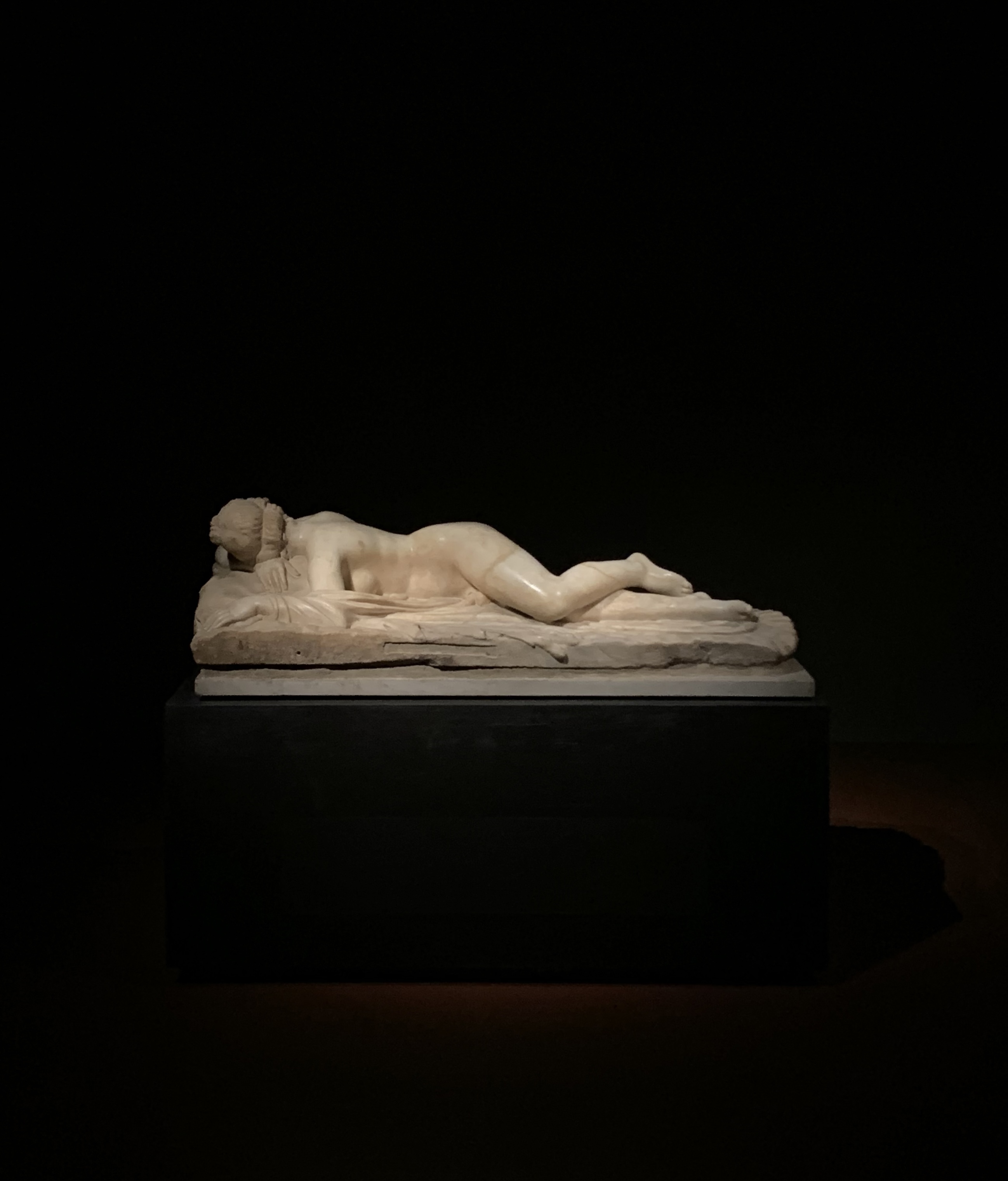Research

Daphne & Apollo
Gian Lorenzo Bernini, 1622-1625 Borghese Gallery, Rome
Gian Lorenzo Bernini, 1622-1625 Borghese Gallery, Rome
The Greek god Apollo insulted Eros, the god of love, by mocking him as a bad shot. In revenge, Eros shot a golden love arrow at Apollo and a leaden one at the nymph Daphne. The golden arrow caused Apollo to fall in undying love with Daphne. The nymph, however, fled from him, since the leaden arrow had caused exactly the opposite in her.Exhausted by the distress, Daphne asked her father, the river god Peneios, to change her shape, so desired by Apollo. Her wish was granted and she was transformed, before Apollo's eyes, into a laurel tree.

Hermaphrodite
Uffizii Galleries, Florence, IT

